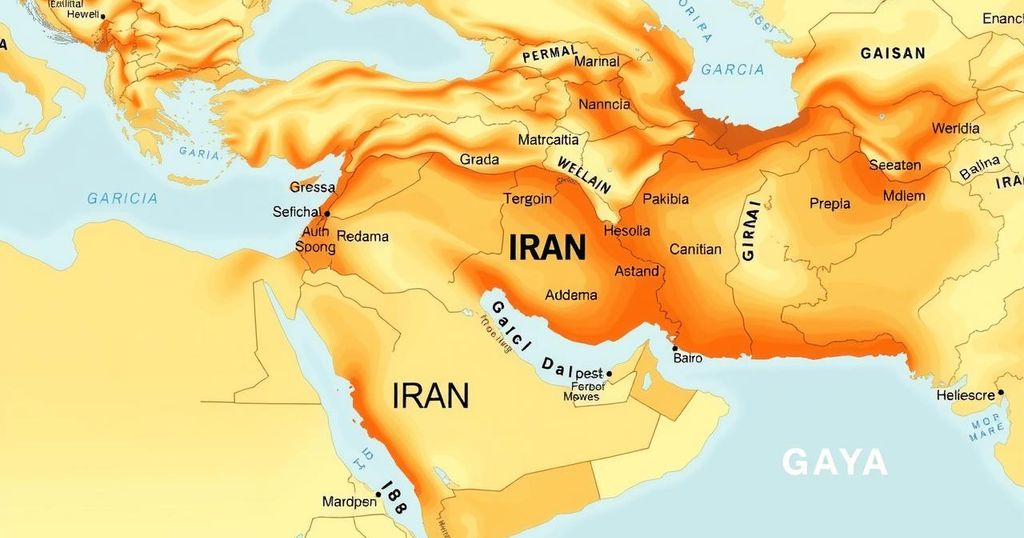Trump’s Middle East Strategy: Navigating Iran Deals Amid Conflicts
President Trump’s Middle East strategy centers on securing an Iran nuclear deal while addressing ongoing regional conflicts. Recent U.S. airstrikes against the Iranian-allied Houthis aim to mitigate threats to shipping and Israeli interests. However, the renewed war in Gaza may undermine diplomatic efforts and strain relationships with Gulf allies, complicating the pursuit of regional stability. Success hinges on remaining adaptable to the evolving geopolitical climate in the area.
U.S. President Donald Trump’s strategy in the Middle East focuses on striking a nuclear deal with Iran, though recent military actions, including airstrikes against Houthi forces in Yemen, raise questions about the overall coherence of this approach. The U.S. aims to halt Houthi attacks on Red Sea shipping and Israel, positioning these military responses as part of broader efforts to curb Iran’s regional influence. However, military support for Israel in Gaza may jeopardize this strategy, as it risks alienating potential allies in the region.
The American strikes against the Houthis are dual-purpose: stopping their aggression and holding Iran accountable, given its support for the militia. U.S. Secretary of Defense Pete Hegseth emphasized, “When the Houthis stop their attacks, we will stop.” Trump has also indicated that continued Iranian advances could provoke significant military action against Iran. The implications of these strikes are profound and signal a willingness to escalate if Iran does not engage in negotiations concerning its nuclear ambitions.
The Trump administration has signaled its readiness for military action against Iran’s nuclear capabilities by holding joint military exercises with Israel. These maneuvers underscore a strategic message aimed at undermining Iran’s confidence concerning the defense of its nuclear sites. In parallel, the U.S. continues its economic pressure against Iran by intensifying sanctions—targeting networks enabling oil exports, crucial for Iran’s economy and its resistance to negotiating nuclear terms.
Simultaneously, the U.S. aims for stability in Syria and Lebanon to counter Iranian influence. A recent agreement with Kurdish forces in Syria is designed to stabilize the region and lessen opportunities for Iranian expansionism. In Lebanon, U.S. efforts are focused on resolving outstanding border disputes and ensuring the Lebanese Armed Forces can counter Hezbollah, with support measures, including a $95 million funding provision.
Contrastingly, the administration’s support for Israel’s renewed military campaign in Gaza undermines efforts to counter Iran effectively. The conflict may distract Israel from focusing on Iranian threats and challenges U.S. relations with Gulf states, which vocally support Palestinian rights. Notably, this turmoil complicates prospective normalization efforts between Israel and Saudi Arabia, which hinge on stability within Gaza.
A range of potential challenges looms over the U.S. strategy. The Houthis may prove difficult to suppress, and Iran could further entrench its position on nuclear negotiations if sanctions do not lighten. Any failures in stabilizing Lebanon and Syria may allow Iranian proxies to regain influence. Consequently, Gaza remains a critical issue that could derail U.S. objectives in the region if the conflict escalates further.
Amid these complexities, the Trump administration has initiated a strategy but must remain flexible to the evolving landscape of Middle Eastern geopolitics. Effective policy will require adaptation and possibly improvisation should circumstances shift drastically, as has been common for past U.S. administrations in the region.
In conclusion, President Trump’s Middle East strategy is primarily focused on negotiating a nuclear deal with Iran while balancing complex regional dynamics. The military actions against the Houthis and support for Israel are interlinked but threaten broader diplomatic efforts. Successful navigation of these challenges requires ongoing adaptation to rapidly changing geopolitical realities, particularly regarding Gaza’s situation and relationships with key regional allies.
Original Source: www.atlanticcouncil.org




Post Comment